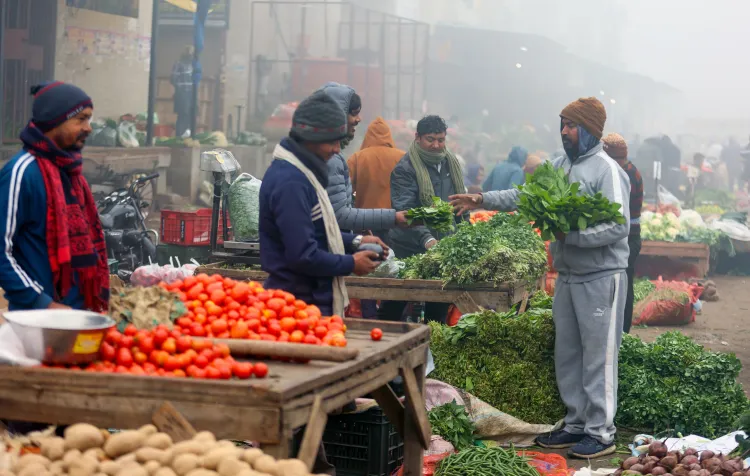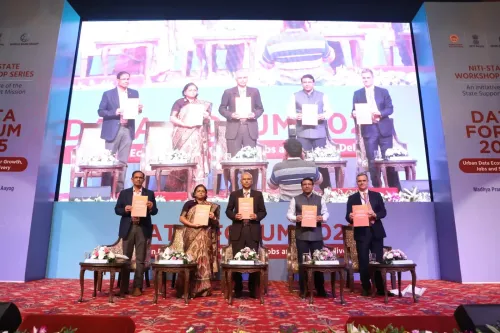Will WPI Decline Boost Domestic Demand Amid Global Uncertainties?

Synopsis
Key Takeaways
- Wholesale inflation in India has dropped to (-) 0.58 percent.
- Food prices have shown significant declines, boosting domestic demand.
- Crude oil prices have also decreased, impacting overall inflation.
- Favorable monsoon conditions could support agricultural growth.
- Future inflation rates may fluctuate based on global market conditions.
New Delhi, Aug 14 (NationPress) The reduction in India's wholesale inflation is set to enhance domestic demand despite the uncertainties in the global economy, as stated by the industry organization PHDCCI on Thursday.
The provisional annual inflation rate, as per the Wholesale Price Index (WPI), decreased to (-) 0.58 percent in July compared to the same month last year, primarily due to a significant drop in food article prices and crude petroleum.
PHDCCI President Hemant Jain remarked that food prices have been steadily declining since February, with inflation in this category falling from 3.43 percent in February to (-) 6.29 percent in July.
“This will stimulate domestic demand, even amidst the fluctuating international scenario,” he noted.
Additionally, crude oil prices saw a notable decrease, shifting from a 12.31 percent rise in June to a drop of (-) 14.86 percent in July.
He further explained that the decline in food prices, paired with a favorable monsoon, would bolster agricultural activity and promote economic growth.
According to government statistics, the WPI inflation for July reached a two-year low, dropping from (-) 0.13 percent in June.
This decline was significantly influenced by a 2.15 percent fall in the food index and a 2.43 percent reduction in fuel prices.
This trend is anticipated to affect retail prices, resulting in a decrease in consumer inflation and lower transportation costs.
Rahul Agrawal, Senior Economist at ICRA Ltd, pointed out that the year-on-year WPI deflation expanded to 0.6 percent in July from 0.1 percent in June, aligning with expectations.
The food sector experienced a more pronounced contraction, especially in vegetables, pulses, and animal products.
However, he cautioned that the WPI could revert to positive figures in August due to rising food and crude oil prices, rupee depreciation, and an unfavorable base effect.
Heavy rainfall may also elevate prices of perishables in the latter part of August, he added.
ICRA forecasts WPI inflation to average around 1 percent in FY26, with CPI inflation anticipated in the range of 3.0-3.2 percent.
This, according to Agrawal, might restrict nominal GDP growth to approximately 8 percent in the fiscal year, compared to 9.8 percent in FY25.









